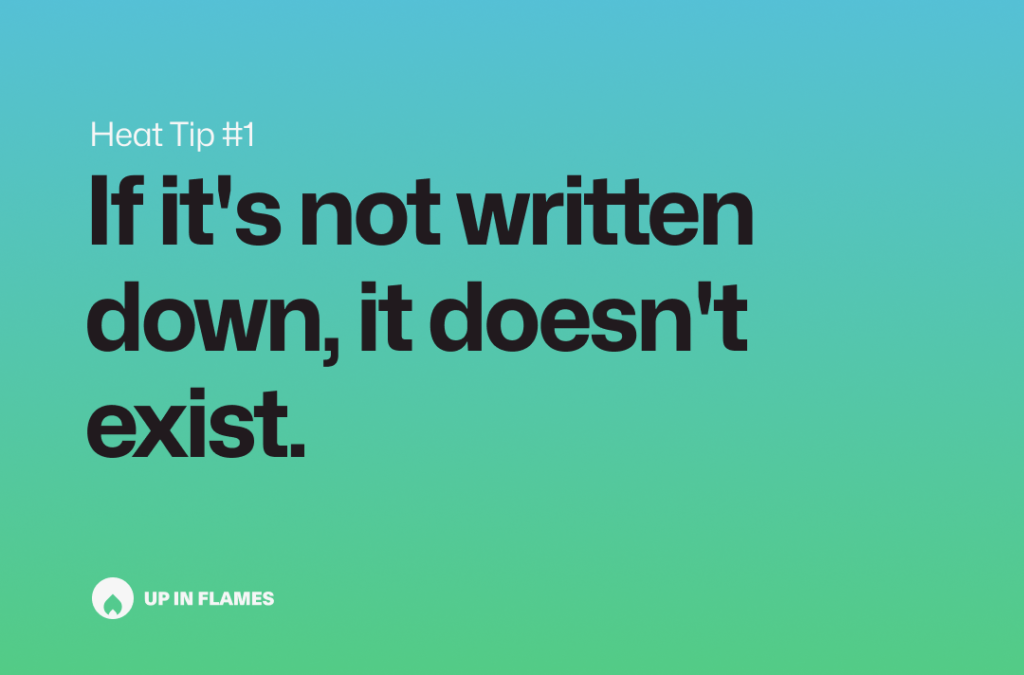
Let’s explore why this simple phrase is profoundly impactful when working in any digital team.
The Importance of Clarity
At the heart of any successful project is clarity. The vision for a feature, a bug fix, or a creative campaign must be unmistakably clear to everyone involved — from marketers to creatives, engineers to stakeholders. But why? Because people can’t read minds. Without a written record, an idea’s original essence is unanchored, susceptible to misinterpretation, or fading away as if it never existed.
Documentation
That’s precisely when the power of documentation comes into play, serving as the bridge between thought and action. We have plenty of tools at our disposal that can help us provide a platform to capture our ideas, requests, and feedback.
Documentation isn’t just about recording—it’s about translating vision into actionable plans. A well-documented idea lays out not just the ‘what,’ but the ‘why’ and the ‘how,’ aligning it with broader objectives.
Creativity
One might argue, “Doesn’t too much documentation stifle creativity?”
I believe the contrary is true. Clear documentation doesn’t restrict creativity; it anchors it. With a solid foundation, teams can innovate within set parameters, understanding their goals and limits. This clarity fosters collaboration, enabling teams to brainstorm, challenge, and iterate on ideas with a solid foundation to build upon.
Accountability and Measurement
“When it’s written down, it exists” goes beyond just bringing ideas to life; it empowers accountability. Each team member knows expectations, by when, and why it matters. This written record becomes how we measure success (was the thing built right?), troubleshoot issues, and how we remember. People are forgetful. Documented goals and tasks crystalize expectations, transforming ‘I thought’ into ‘We agreed.’
Who is responsible?
Documentation isn’t the sole responsibility of any single role; it’s a collective effort tailored to maximize each team member’s unique expertise:
- Marketers: You are tasked with crafting compelling marketing campaigns. To start, creative briefs are required. They clearly articulate the campaign’s vision, audience, objectives, and expected deliverables. A well-prepared creative brief ensures that all creative and marketing efforts are aligned with the project’s goals and provides a reference point for evaluating the effectiveness of marketing strategies.
- Product Owners: You are custodians of product scope. It is essential to fully document the ins and outs of the product features, bug fixes, and user stories within tools like Jira. Their documentation is the definitive guide for what needs to be accomplished and why.
- Technical Architects: You are responsible for the technical roadmap. You must maintain comprehensive and up-to-date architectural diagrams and technical specifications that align with the project’s goals. This ensures all team members understand the project’s underlying structure and integration points.
- Project Managers: You are charged with being the project’s unified consciousness. You should log essential decisions, meeting notes, and risk events so they can be discussed and remembered. Don’t become a journalist.
- Creative Roles: You play a critical role in documenting our projects’ visual and experiential aspects. Use tools like Figma to add detailed functional comments to your UI and UX designs. These annotations should clarify your design choices and the reasoning behind each decision. Such documentation ensures the strategic vision remains clear and consistent across all teams involved, particularly during handoffs or iterations. Also, remember to name your layers thoughtfully—these names provide additional context and can be crucial for understanding the structure and intent of your design. In your role, a good prototype says more than 1000 words.
- Team Members: Every team member possesses specialized knowledge and insights invaluable to the collective success. Encouraging everyone to document their knowledge and observations preserves this wisdom and fosters an environment where information is readily accessible for learning and decision-making.
Concluding
Adopting this Heat Tip isn’t just about filling up databases and documents with endless descriptions; it’s about embracing a culture of clarity, responsibility, and shared accountability.
So, the next time you have a great meeting or a brilliant idea, remember: if it’s not written down, it doesn’t exist. Let’s make our projects memorable for their achievements and not missed opportunities.

